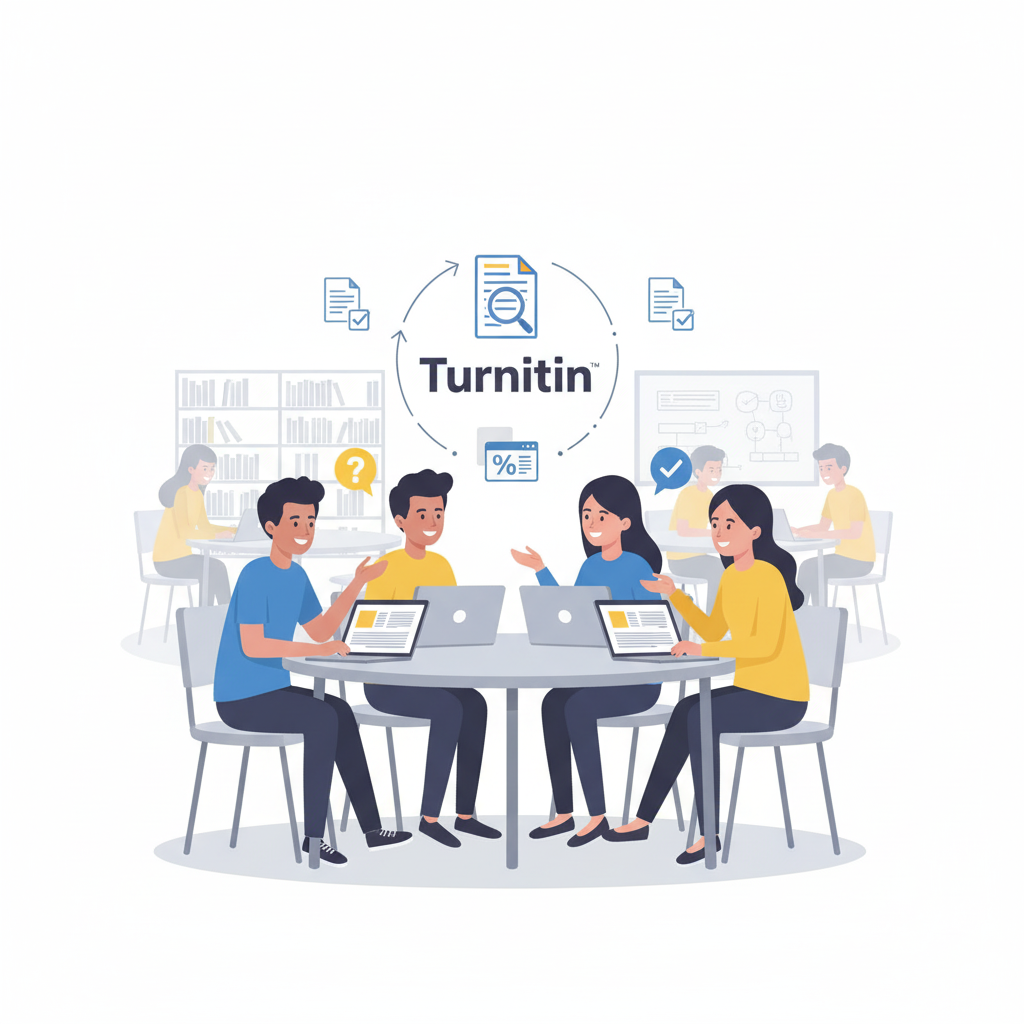Persepsi pengguna terhadap pemahaman aplikasi Turnitin untuk mencegah plagiarisme pada Prodi Ilmu Perpustakaan dan Informasi Islam angkatan 2019/2020
DOI:
https://doi.org/10.53088/librarium.v1i2.774Keywords:
Perception, Turnitin Application, PlagiarismAbstract
Introduction: One of the developments in the era of technology and communication is daily access, for example the internet, which is useful for being able to search for information and provide it to other people. The large amount of incoming information can cause many works to be plagiarized, and one way to prevent this is to use the Turnitin application. The aim of this research is to find out how users perceive the understanding of the Turnitin application to prevent plagiarism in Islamic library and information science research programs.
Data Collection Methods: This research uses quantitative descriptive research. Respondents were taken from Islamic Library and Information Science students for the 2019/2020 academic year, totaling 123 students, with a sample size of 55 respondents calculated using the Slovin formula. Data was collected using a questionnaire distributed via Google Form and measured using a Likert scale.
Data Analysis: Data analysis uses (1) Variable description analysis, (2) Normality test with the Kolmogrov Smirnov formula to see whether the data is normal or not, (3) Linearity test with a significance value of Deviation from linearity >0.05 then linear, (4) Linear regression test to ensure the relationship between variables x and y.
Results and Discussion: The research results show that students' perceptions of the cognitive aspect have the highest index value, while the aspect that needs to be improved is the affection aspect. Student understanding comes from externally. For the simple linear regression test requirements, the data must be valid, reliable, normal and linear, therefore by using a simple linear regression analysis test you can look for relationships to obtain a correlation/relationship value (R) of 0.415. The determinant coefficient (R Square) value obtained through SPSS data processing is 0.172, indicating that the independent variable (perception) has an influence of 17.2% on the dependent variable (understanding).
Conclusion: Libraries need to hold workshops on plagiarism or Turnitin to check word similarities to identify plagiarism in final assignments and articles. The target is the entire academic community (lecturers, staff, and students). Therefore, it is hoped that these findings can become the basis for further research and can be continued.
References
Ghozali, I. (2018). Desain Penelitian Kuantitatif dan Kualitatif. Yoga Pratama.
Lidwan, N., Roni, F., Siagian, S., & Adianta Sebayang, S. (2022). Peranan Perangkat Turnitin Dalam Mendorong Karya Ilmiah Berkualitas. Akrab Juara : Jurnal Ilmu-ilmu Sosial, 7(4), 2888–305. https://doi.org/10.58487/AKRABJUARA.V7I4.1960 DOI: https://doi.org/10.58487/akrabjuara.v7i4.1960
Manunggal, Y. C., & Christiani, L. (2018). Pemanfaatan Sistem Deteksi Plagiarisme Menggunakan Turnitin® Pada Jurnal Mahasiswa Universitas Dian Nuswantoro. Jurnal Ilmu Perpustakaan, 7(2), 231–240. https://doi.org/10.2/JQUERY.MIN.JS
Munthe, I. S., & Raharjo, S. T. (2018). Pemenuhan Kebutuhan Afeksi Pada Anak (Peningkatan Kemandirian Dan Kepercayaan Diri Di Lembaga Kesejahteraan Sosial Anak - LKSA). Focus : Jurnal Pekerjaan Sosial, 1(2), 119–123. https://doi.org/10.24198/FOCUS.V1I2.18276 DOI: https://doi.org/10.24198/focus.v1i2.18276
Permendikbud No. 17 Tahun 2010. (t.t.). Diambil 5 Februari 2024, dari https://peraturan.bpk.go.id/Details/163898/permendikbud-no-17-tahun-2010
Pratama, M. A. (2018). Peran Pustakawan Uin Jakarta Terhadap Implementasi Turnitin Dalam Mencegah Plagiarisme.
Putri, D. S., & Santoso, B. (2020). Persepsi Mahasiswa Tentang Penggunaan Aplikasi Turnitin Untuk Mencegah Tindak Plagiarisme di Perpustakaan Universitas Bina Darma Palembang. Fihris: Jurnal Ilmu Perpustakaan dan Informasi, 15(2), 216. https://doi.org/10.14421/fhrs.2020.152.216-235 DOI: https://doi.org/10.14421/fhrs.2020.152.216-235
Ramadanti, A. N., Zulfa, E. I., Sunariadi, N. M., & Novitasari, D. C. R. (2022). Peramalan Pergerakan Inflasi Di Jawa Timur Dengan Menggunakan Metode Triple Exponential Smoothing. Jurnal Matematika Sains dan Teknologi, 22(2), 40–49. https://doi.org/10.33830/jmst.v22i2.1346.2021 DOI: https://doi.org/10.33830/jmst.v22i2.1346.2021
Risparyanto, A. (2020). Turnitin Sebagai Alat Deteksi Plagiarisme. UNILIB : Jurnal Perpustakaan, 11(2). https://doi.org/10.20885/unilib.vol11.iss2.art5 DOI: https://doi.org/10.20885/unilib.vol11.iss2.art5
Saleh, A. A. (2018). Pengantar psikologi. Penerbit Aksara Timur.
Santoso, S. (2016). Panduan Lengkap SPSS Versi 23. Elekmedia Computindo.
Santoso, Y., & Priantinah, D. (2016). Pengaruh Profitabilitas, Ukuran Perusahaan, Struktur Aktiva, Likuiditas Dan Growth Opportunity Terhadap Struktur Modal Perusahaan. Jurnal Profita: Kajian Ilmu Akuntansi, 4(4). https://journal.student.uny.ac.id/index.php/profita/article/view/5636
Sardiman, A. (2014a). Interaksi dan Motivasi Belajar Mengajar. Raja Grafindo Persada.
Sardiman, A. (2014b). Interaksi dan Motivasi Belajar Mengajar. Raja Grafindo Persada.
Sinaga, S. Y. (2018). Penggunaan Aplikasi Turnitin Sebagai Sarana Cek Plagiarisme dalam Layanan Perpustakaan Universitas Ukrida. BIBLIOTIKA : Jurnal Kajian Perpustakaan dan Informasi, 2(2), 123–131. https://doi.org/10.17977/UM008V2I22018P123 DOI: https://doi.org/10.17977/um008v2i22018p123
Sintia, I., Pasarella, M. D., & Nohe, D. A. (2022). Perbandingan Tingkat Konsistensi Uji Distribusi Normalitas Pada Kasus Tingkat Pengangguran Di Jawa. Prosiding Seminar Nasional Matematika dan Statistika, 2. http://jurnal.fmipa.unmul.ac.id/index.php/SNMSA/article/view/844
Sugiyono. (2017a). Metode penelitian kuantitatif dan kualitatif dan R&D. Alfabeta.
Sugiyono. (2017b). Metode Penelitian Kuantitatif Kualitatif Dan R&D. CV Alfabeta.
Walgito, B. (2010a). Pengantar Psikologi Umum. CV Andi Offset.
Walgito, B. (2010b). Pengantar Psikologi Umum. CV Andi Offset.
Widiasworo, E. (2017). Study Smart. Elex Media Komputindo.

Downloads
Published
How to Cite
Issue
Section
License
Copyright (c) 2024 Putri Triya Mei Witanti, Nurul Setyawati Handayani

This work is licensed under a Creative Commons Attribution-ShareAlike 4.0 International License.
Authors retain copyright and grant the journal the right of first publication with the work simultaneously licensed under a Creative Commons Attribution-ShareAlike 4.0 International License. In line with the license, authors are allowed to share and adapt the material. In addition, the material must be given appropriate credit, provided with a link to the license, and indicated if changes were made. If authors remix, transform, or build upon the material, they must distribute their contributions under the same license as the original.
License details: https://creativecommons.org/licenses/by-sa/4.0/
Most read articles by the same author(s)
- Nadia Arista Putri, Nurul Setyawati Handayani, Efektivitas Penggunaan Sistem Srikandi dalam Pengelolaan Arsip Dinamis di Dinas Perpustakaan dan Kearsipan Kabupaten Tulungagung , Librarium: Library and Information Science Journal: Vol. 2 No. 2 (2025): Librarium: Library and Information Science Journal

